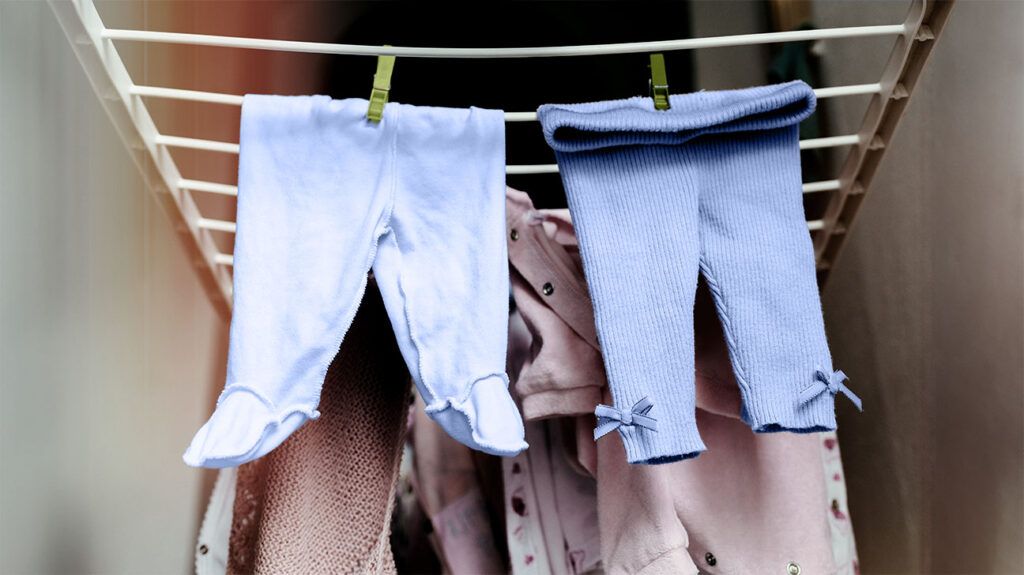Light, breathable, and soft fabrics, such as cotton, are generally the best option for babies with eczema. Avoid clothing that can irritate the skin, promote scratching, or cause sweating.
Atopic dermatitis, or eczema, is a skin condition that causes skin irritation, itchiness, dryness, and other symptoms.
Fabric, style, and clothing features can all impact whether clothing is eczema-friendly. How a caregiver dresses a baby may also play a role. For example, in summer, removing sweaty clothes or wet swimwear and replacing them with dry clothes could prevent skin irritation.
This article will discuss eczema-friendly clothing for babies, including what to look for, what to avoid, and how to use clothing in different seasons.

Soft, breathable fabrics that do not irritate the skin are best for infants with eczema. Cotton and silk are popular recommendations.
According to a
Other natural fabrics could also be appropriate. For example, while wool can be scratchy, merino wool has moisture-regulating properties that could help the skin. A small
New and potentially helpful fabrics are in development, but it is unclear how well they work at present.
In addition to fabric, the style and fit of clothing can also make a difference to eczema, depending on where it is. Caregivers may find it useful to opt for:
- loose onesies
- T-shirts
- leggings
- dresses
- tunics
Tight trousers or waistbands may be uncomfortable when eczema is around the belly. Similarly, chunky zips or seams near the skin might be irritating. Fastenings with low profile buttons or poppers may be better since they are not directly next to the skin.
Dry air and extreme temperatures can make eczema symptoms worse for some people. If winter weather could be making a baby’s eczema worse, it may help to adjust their clothing.
During cold weather, dress an infant to keep them warm and dry. In addition to using eczema-friendly fabrics and styles, consider:
- dressing a baby in layers that a person can easily remove if they get too hot
- starting with thinner layers underneath, then warmer layers on top
- ensuring the baby wears gloves, mittens, or a hat when outdoors
- replacing any damp clothing with dry items as soon as possible
Learn more about caring for eczema in winter.
Warm weather, humidity, and sun exposure can also contribute to eczema flare-ups. In summer, try:
- dressing the baby in lightweight cotton, such as voile or muslin
- opting for clothing that covers the shoulders and arms, where possible
- providing a comfortable hat with a brim to protect from sun exposure
- changing out of sweaty clothing, when possible
It is worth noting that saltwater from the sea and chlorine in swimming pools can be either soothing or irritating. When taking children to a pool or the beach, it may help to:
- wash swimwear before the first use to remove any chemicals
- have them try on swimwear at home to check there is no reaction before going swimming
- moisturize the skin before getting in the water
- if irritation occurs, rinse the skin off when they are out of the water
Learn more about swimming and eczema.
Babies with eczema may respond differently to different features of their clothing. However, the following may be irritating for some, depending on where their eczema is on the body:
- rough or textured fabrics, such as lambswool
- synthetic fabrics, such as polyester, as they can cause sweating and may feel scratchy
- textured embellishments, such as sequins
- tight waistbands, collars, or cuffs
- prominent seams, zips, or poppers
There may be ways a caregiver can adapt clothing they already have to make it more eczema-friendly for their baby. It may help to:
- remove large or scratchy tags and care labels
- cover waistbands or other textured features that sit next to the skin with silk or soft fabrics
- use soft base layers, such as cotton vests or onesies, underneath outer clothing
- fasten clothing using the loosest setting
- wash new clothes before the first wear
- use nonbiological laundry detergent with no fragrance or dyes
The best eczema-friendly clothing for babies is soft and breathable. Smooth, natural fibers, such as silk and cotton, are ideal. Avoid heavy, rough, or synthetic fabric.
Style and shape is also a consideration. Loose-fitting styles can help prevent rubbing. Textured features that rub against the skin, such as seams, tags, and waistbands, may cause irritation.
There are also ways of adapting clothing, depending on the weather and what caregivers already have on hand. For example, they can cover bothersome features with softer fabrics, and in colder weather, use cotton base layers between the skin and outer clothing.
If the baby’s eczema is severe or causing distress, speak with a doctor for more advice on treatment and skin care.
